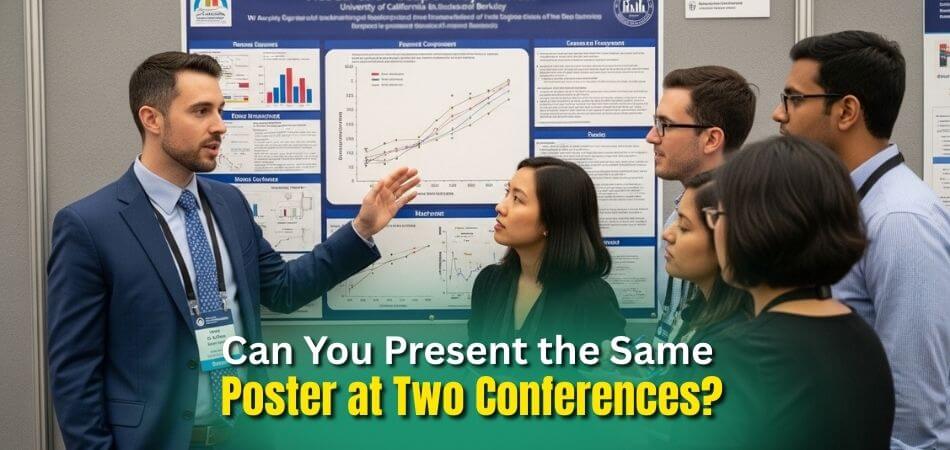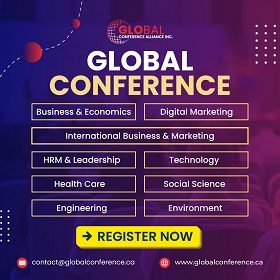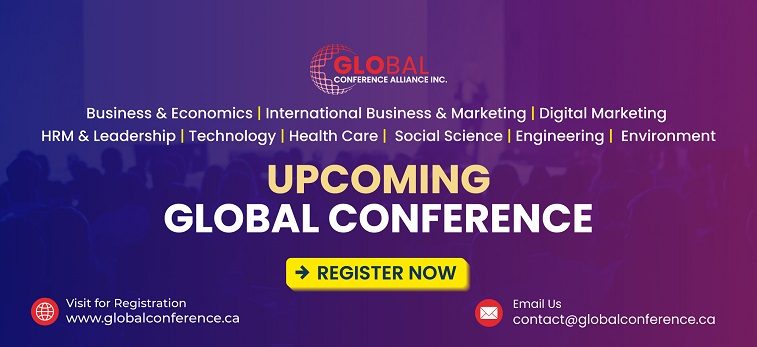Conferences bring people together to share ideas, discuss new findings, and connect with others in the same field. They are exciting events filled with posters, talks, and opportunities. At some point, you may wonder, Can you present the same poster at two conferences?
You can present the same poster at two conferences only if both events allow it. Some accept repeats, some require updates, and others forbid them completely. Always check each conference’s rules before submitting to avoid rejection or policy issues.
Are you curious about which conferences allow repeats and which ones do not? If so, keep reading, because this article explains all the key details about poster reuse, including rules, risks, and useful tips, so you have everything you need in one place.
Can You Present the Same Poster at Two Conferences?
It can be confusing to know if the same poster can be shown at more than one event. The rules are not the same everywhere, so you have to check carefully. Some meetings welcome repeat posters, but others will not allow them. Keep reading to see how this works.
Allowing Repeats
There are conferences that make it simple by clearly accepting encore posters. For example, the World Sleep Congress allows a poster to be presented again. This helps researchers share their work with new groups who may have missed the first presentation.
Strict Rejection
Some events do not allow repeated posters under any conditions at all. ISOQOL’s policy is very clear that encore abstracts and presentations will not be accepted. ESMO also rejects encore submissions, so if you plan to attend, you must prepare something new.
Accepting Updates
There are events that only allow a repeat if you add something fresh. The AHA Resuscitation Science Symposium requires extra or updated data in the poster. This rule means you must include more findings or improvements before presenting again.
Limited Chances
A few organizations will consider encore submissions, but only with restrictions. The Child Neurology Society allows repeats if an abstract was shown once before. This gives a researcher a small chance to present the same work again.
International Events
Rules are not always the same in every country or region. For instance, if you are considering international events like conferences in Canada, the USA, or any other country, you may find some flexible while others prefer only new research. Always read each organizer’s rules before submitting.
Double Submissions
Sending the same abstract to two meetings at the same time is risky. This is often called “simultaneous submission,” and most organizers forbid it completely. You should always avoid this unless the conference rules specifically allow it.
Publishing Later
Most journals do not see a conference poster as a prior publication. Big names like NEJM and Nature confirm that posters will not block future submissions. Still, it is always best to review the rules of the journal you plan to submit to.
Online Posting
Uploading your poster online can sometimes cause problems with later publication. Some journals or sponsors may treat this as public sharing, which they dislike. To be safe, avoid posting the full version until you are sure it is allowed.
Patent Issues
When research could lead to a patent, showing it early is risky. A poster counts as a public disclosure, which may affect your rights. Always talk to your patent office or a professional before showing such work.
The answer depends on each event’s own policy and rules. Some welcome repeats, others only allow updates, and many forbid it. Always read guidelines closely before sending your poster anywhere. A little care can save big problems later.
Why Do Researchers Present Posters at Conferences?
You might notice many colorful posters filled with charts, pictures, and ideas at research conferences. These posters are not just decorations. They actually serve a very important purpose. Let’s look at why researchers present posters and how they benefit from them.
Sharing Research
Researchers use conference poster presentations as a way to share their findings, receive feedback, and connect with peers in a less formal setting than oral sessions. Posters allow them to explain their work clearly, using visuals like graphs or images. This helps others quickly understand their project without needing to sit through long talks.
Building Connections
Posters are often displayed in large halls where people walk around and stop at what interests them. This gives researchers a chance to meet people who are curious about their topic. A short chat by the poster can open doors for collaborations and future projects.
Getting Feedback
When people stop by a poster, they usually ask questions or give suggestions. This feedback can be very useful. Sometimes it helps researchers see mistakes, think in new directions, or make their work stronger. It’s like a practice round before publishing.
Easy Communication
Posters make it easier to explain complex ideas in a simple way. Instead of long reports, researchers highlight the most important points with visuals. This helps people from different fields or backgrounds understand what the research is about without needing too much prior knowledge.
Opportunities Ahead
Conferences are not just about sharing what is already done. Posters can also lead to exciting opportunities. Someone interested in the research might invite the presenter to join a project, give a talk, or even publish in a journal. A simple poster can create big chances.
Poster sessions help researchers share their work with wider scientific communities. They also give opportunities for feedback that improve the research overall. Building networks through posters can open professional doors and new paths. Posters remain an effective way of learning, sharing, and growing.
What Are the Risks of Presenting the Same Poster Twice?
Presenting posters at events is a great way to share your research with others. It helps you connect with people and get useful feedback. But showing the same poster more than once may not always bring positive results. If you want to avoid problems and keep your work respected, it is important to know the possible risks before repeating a poster. Keep reading to see the main points you should consider.
- Risk of rejection: Many conferences have strict rules, and repeating a poster might break those rules, which can lead to rejection right away.
- Ethical concerns: Sharing identical work in two different places without clear mention can raise questions about honesty and fairness in research practices.
- Reduced academic credibility: Audiences may lose trust if they notice repeated work, as it gives the impression of recycling ideas without adding anything new.
- Missed learning opportunity: Presenting the same work twice means losing the chance to improve, expand, or update the research for better feedback.
- Possible rule violations: Some conferences clearly state that duplicate posters are not allowed, and ignoring these rules can damage your professional record.
- Audience disappointment: People expect fresh knowledge at conferences, and repeated posters can make them feel like their time and interest were not respected.
- Future limitations: Being known for repeating work can harm chances of acceptance in future events, as organizers may hesitate to approve submissions.
Repeating posters might look like an easy path, but it can bring rejection, loss of trust, and fewer opportunities. Instead, making changes or adding updates shows growth and effort. This way, your work remains respected and valued. Always treat each presentation as a fresh chance to shine. That approach helps build strong credibility and better professional recognition in the long run.
What Are the Ethical Considerations in Reusing Posters?
Posters are an important way to share research at academic events. Sometimes, researchers think about reusing the same poster more than once. While this might save time, there are some concerns about it. Let’s look at the main ethical points together.
Being Transparent
When a poster is shown again, it should be done with honesty. Viewers deserve to know if the content has already been presented before. Hiding this fact can make people question the presenter’s fairness. Being open avoids problems and keeps professional interactions clear.
Professional Reputation
Researchers are known by the way they present their work publicly. Reusing posters without clarity can damage their reputation. It may make others feel they lack fresh ideas or effort. Protecting one’s professional image requires honesty and respect for the audience’s expectations.
Peer Perception
Colleagues often judge the value of a researcher by their efforts. If peers see repeated work without updates, it may lower their opinion. They might think the presenter is not serious about progress. Keeping peers’ trust is important for building strong academic relationships.
Value of Effort
People spend time and energy traveling to conferences to learn. When they see repeated posters, they might feel disappointed. They expect to discover new knowledge and ideas each time. Respecting their effort means offering fresh or updated research whenever possible.
Fair Opportunities
Conferences have limited spaces for posters to be displayed. If one researcher reuses old work, it may take away a chance from others. This can feel unfair to those who have new findings. Fair use of space ensures equal opportunities for all participants.
Reusing posters raises important questions about honesty and responsibility. Researchers must protect their reputation by staying open and fair. They should always consider how peers may judge repeated work. A clear approach keeps trust strong and research respected.
Why Does Presentation Quality Matter in Poster Reuse?
Presentation quality decides how people connect with your work and ideas. A reused poster may still hold value, but a weak presentation makes it lose impact. Good delivery helps maintain respect even when content is repeated. Keep reading to understand why presentation quality matters so much.
Professional look
When a poster looks neat and is explained with confidence, it builds trust and respect. Even if reused, a messy design or poor delivery harms the overall impression. People often judge work based on presentation quality before understanding the actual research behind it.
Audience interest
Keeping people engaged requires clear design, readable text, and simple flow. If these are missing, attention fades quickly, and the message is ignored. A reused poster becomes valuable only when delivered in a way that captures interest and holds it throughout the entire session.
Strong credibility
Audiences tend to respect researchers who put effort into their presentation. A reused poster can still appear valuable if explained clearly and updated slightly. Without this effort, it looks like the presenter is recycling old material, which lowers trust and reduces their academic credibility overall.
Conference standards
Event organizers expect presenters to follow certain rules and deliver quality. Ignoring these expectations can lead to rejection or a poor reputation. Even if posters are reused, applying the key elements for a conference presentation ensures they look professional, polished, and ready for any formal audience.
Future chances
Every poster presentation influences future opportunities in academic or professional events. Poor quality makes organizers hesitant to accept later submissions from the same person. On the other hand, strong delivery creates positive recognition and increases the likelihood of being invited again in the future.
A reused poster is not always a major problem. What matters most is the effort put into its quality. Good delivery ensures people see the value in the work. Strong presentation creates trust, respect, and better opportunities in future events.
How Can You Update a Poster for a Second Conference?
Sometimes researchers need to present the same project at more than one event. In such cases, simply reusing the same poster may not be the best choice. Making updates can improve the poster and keep it fresh. Let’s see some useful tips here.
Add New Data
Updating a poster can start with including the latest results. Adding fresh data shows progress and makes the poster more valuable. Even small updates can change how people understand the study. Audiences notice these details and appreciate the effort to keep things current.
Change the Design
A new design can make an old poster look more engaging. Adjusting colors, fonts, or layout creates a fresh impression. Simple changes in style can catch attention in a crowded hall. This helps the poster stand out, even if the content is similar.
Adjust for Audience
Not every conference has the same type of visitors or experts. A poster can be edited to match the audience better. This might mean simplifying details, adding more visuals, or highlighting certain results. A targeted approach makes the presentation easier for people to follow.
Highlight Key Points
Sometimes posters are too crowded with information, which distracts the audience. Choosing a few strong points to highlight makes the message clear. Adding larger visuals or bold text can guide the viewer’s focus. This ensures the most important parts are not missed.
Improve Clarity
Feedback from the first conference can be used to improve the poster. If people ask similar questions, adding clear answers can help. Fixing unclear wording or improving figures will make the poster stronger. This shows growth and dedication to clear communication.
Updating a poster is more than just reusing old content. Adding data, improving design, and focusing on clarity make it stronger. A poster that changes with each event keeps the work fresh. Simple updates can leave a lasting impression on audiences.
FAQs About Can You Present the Same Poster at Two Conferences?
Many researchers wonder about the rules and risks of showing the same poster at more than one conference. The answer is not the same for every event, because policies change from place to place. If you have ever asked yourself, Can you present a poster at more than one conference, the short reply is that it depends on the event’s guidelines. These FAQs will help clear some common doubts and give simple explanations so you can decide the best way forward.
Can Presenting the Same Poster Twice Affect My Chances of Networking?
Yes, it can affect your chances. If the audience has already seen your poster before, they may not show as much interest. A fresh or updated poster often draws more people, which helps you build stronger connections. To keep networking opportunities open, try adding new data or making design changes.
Is It Better to Present the Same Poster at a Small Conference and Then a Big One?
Many researchers choose to start with a smaller event before presenting at a larger conference. This allows them to practice, get feedback, and then make updates before facing a bigger audience. Doing this gives a better impression because the poster looks improved and more polished. It also shows that you take feedback seriously.
Can I Mention in My Abstract That the Poster Was Shown Before?
Yes, you can, and in fact, it is a good idea. Being honest about where the poster was first shown helps avoid ethical issues. Conference organizers appreciate transparency, and it shows respect for the rules. Hiding this information can cause problems if it is later discovered.
Does Reusing a Poster Save Time or Hurt My Reputation?
Reusing a poster might save time in the short run, but it can harm your reputation if it looks like you are recycling old work. People may think you are not putting effort into new ideas. On the other hand, making updates shows growth and keeps your work respected. So, a balance of saving time and keeping credibility is important.
Should I Change the Title if I Present the Same Poster Again?
Changing the title is often a smart choice, especially if you add new data or shift focus. A new title signals that the work has grown since the first time it was shown. Even a small change in the title helps avoid confusion. This also makes the poster look like a fresh version rather than a repeat.
How Do Different Fields Treat Reusing Posters?
Not all fields have the same rules or attitudes. For example, medical and health-related conferences often have stricter rules about repeats. In other fields like engineering or education, some conferences may be more flexible. Always check the culture and rules of your specific area before deciding.
Can Repeating a Poster Affect My Chances of Publishing in a Journal?
Usually, journals do not treat posters as full publications. But if you repeat the same poster too many times without updates, reviewers may feel it adds little new value. It is better to show growth in the work before publishing. This way, your journal submission will appear stronger and more original.
Should I Tell My Audience If the Poster Was Presented Before?
Yes, it is good practice to tell your audience. A simple note like “This poster was first shown at X conference” adds honesty and clarity. Most people respect that, especially if you also show updates. It helps you build trust and maintain credibility.
Is It Okay to Present the Same Poster at Conferences in Different Countries?
Presenting the same poster in two countries is usually less of a problem, since the audiences may not overlap. Still, it depends on the policies of each event. Some international conferences are strict, while others are flexible. Always read the rules of both events before making a decision.
What Is the Best Way to Handle Feedback Between Two Poster Presentations?
The best way is to use feedback from the first event to improve your poster for the second one. If many people ask the same questions, try adding answers directly to the poster. You can also make graphs clearer or highlight results better. Doing this shows that you value feedback and are serious about improving your work.
Conclusion
Presenting research posters at conferences can open many doors for recognition and growth. However, the decision to reuse a poster requires careful thought. Every conference has its own rules, and knowing these in advance protects your work and reputation.
The question can you present the same poster at two conferences? has no single answer. Some conferences welcome repeats, others only accept updated versions, while many reject them outright. The safest choice is to always check guidelines before deciding.
If you do plan to reuse, try updating data, adjusting the design, or improving clarity. This keeps your work fresh and professional. With careful preparation, your posters can bring respect, connections, and valuable opportunities. Best wishes for your next conference.








